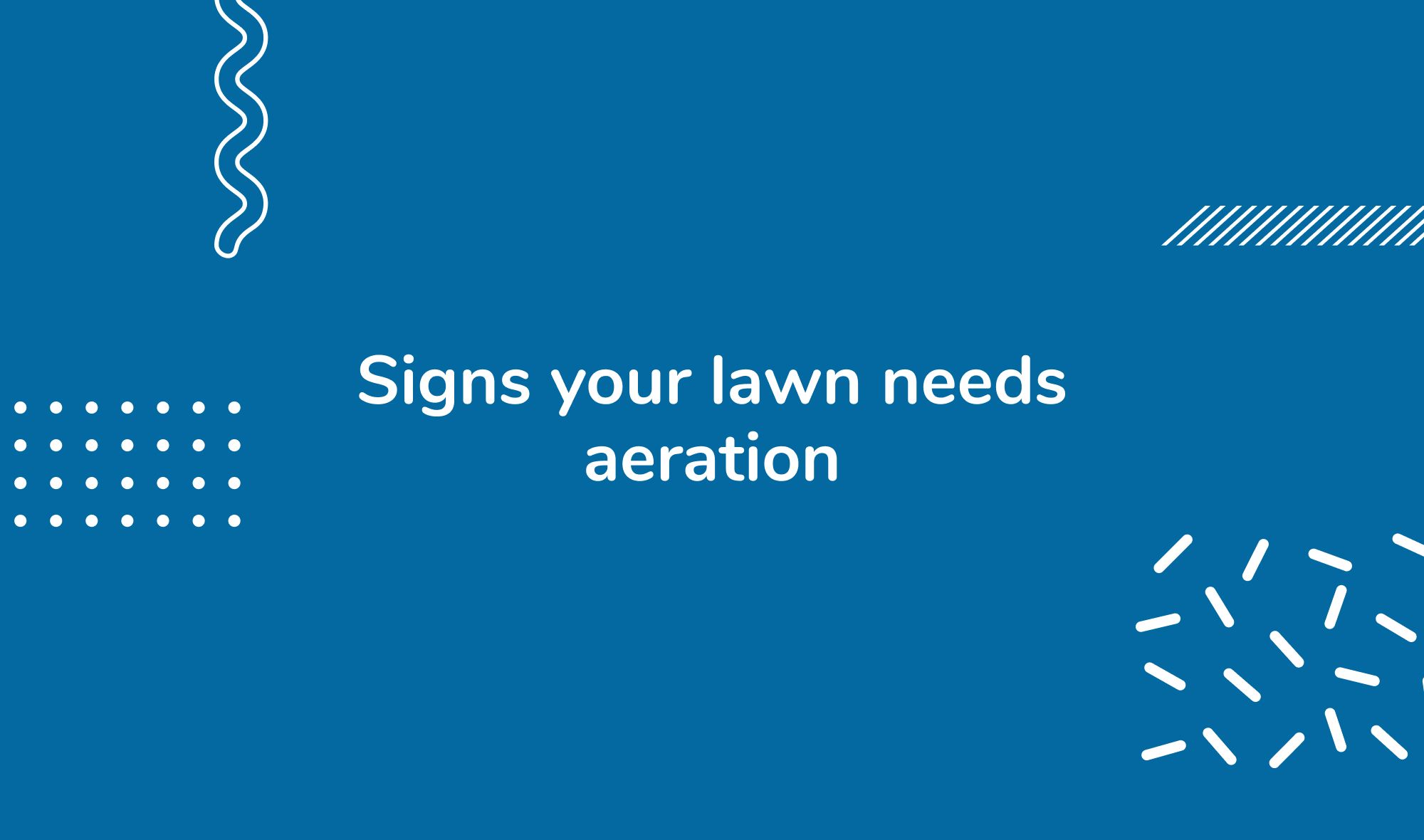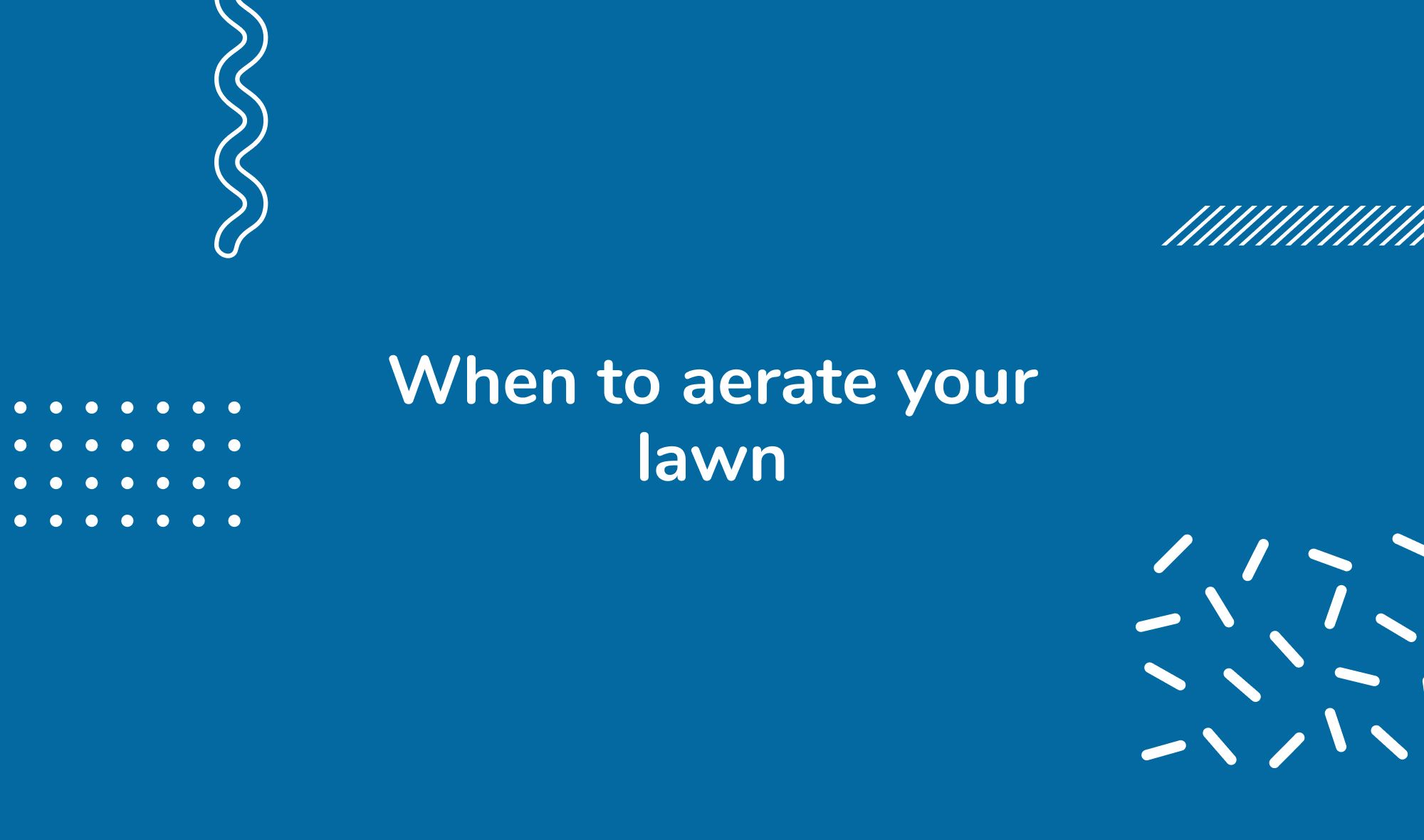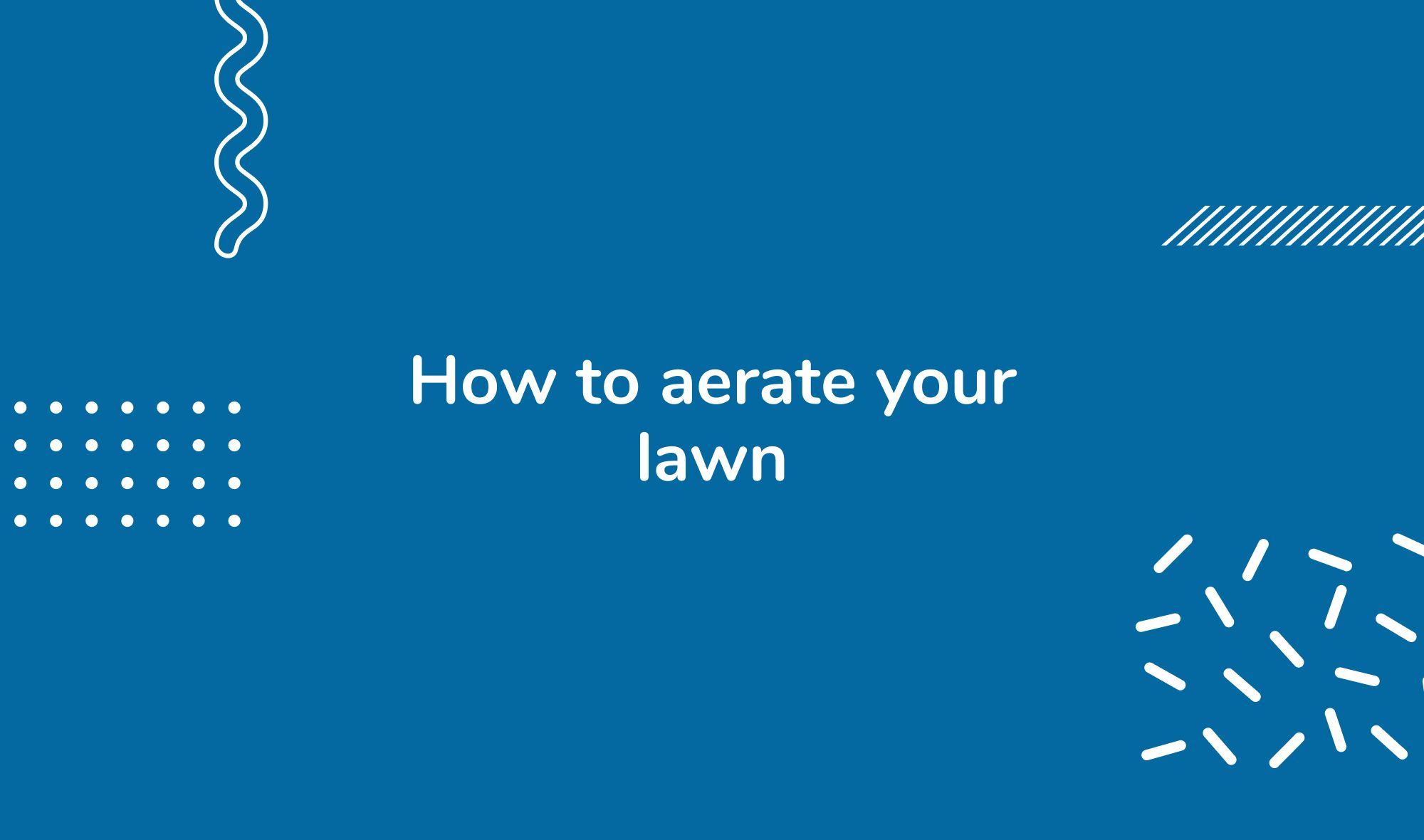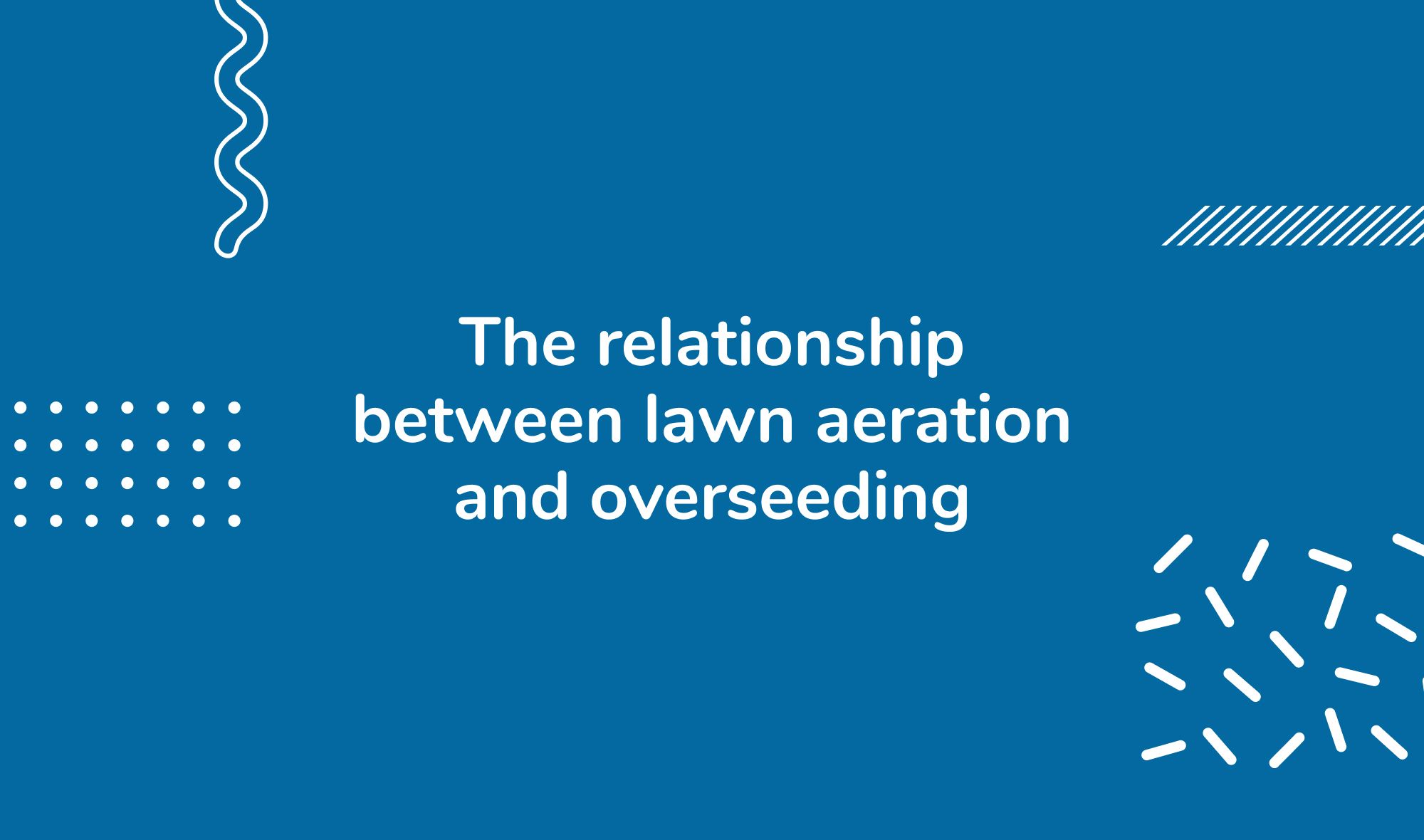Key Takeaways
- Aeration is vital for a healthy lawn as it alleviates soil compaction, promotes root growth, and improves water and nutrient absorption.
- The best time to aerate your lawn depends on the type of grass - cool season grasses in early fall or spring and warm season grasses in late spring or early summer.
- Overseeding should be done immediately after aeration for best results.
- Post-aeration lawn care includes regular watering, mowing, fertilizing, and annual or bi-annual aeration based on soil conditions.
- The lush, green lawn you desire is achievable with planning, patience, and diligent care.

A beautiful lawn is an essential component of a captivating home. Yet, maintaining a lush, green carpet of grass is a delicate art. It’s more than just watering, mowing, and weeding. One crucial aspect that often gets overlooked is lawn aeration.
While the term "lawn aeration" may sound complex, it's an incredibly simple yet effective procedure that can make a significant difference in the health and appearance of your lawn. Simply put, aeration is the process of perforating small holes in the soil surface to allow air, water, and nutrients to penetrate the grass roots. This not only helps the roots grow deeply but also creates a more robust and vibrant lawn.
Over time, factors such as foot traffic, mowing, and natural growth can lead to compacted soil and thatch buildup, which in turn, can suffocate your grass roots and stunt their growth. This is where the practice of aeration becomes necessary.
So, when to aerate your lawn? How often should you do it? What are the signs that your lawn needs aeration? And how can you carry out this process for optimal results? These are some of the questions we'll answer in this blog post. Join us as we walk you through the ins and outs of lawn aeration, offering expert tips and guidelines on achieving and maintaining a healthy, aesthetically pleasing lawn.
Join our newsletter
Stay on top of the latest in landscaping and lawn care with one valuable tip right in your inbox every Saturday morning.
Understanding lawn aeration
What is Lawn Aeration?
Lawn aeration is a straightforward yet essential lawn care practice that involves making small holes in the soil surface to improve the penetration of air, water, and nutrients to the grass roots. The most common methods include spike aeration, where a tool with solid tines punches holes into the soil, and core aeration (also known as plug aeration), where a machine removes plugs of soil and deposits them on your lawn's surface. These soil plugs decompose over time, mixing with the thatch layer on the lawn and helping it decompose faster.
The Relationship between Lawn Aeration and Grass Roots
At the heart of every healthy lawn are strong, deep-reaching grass roots. And for these roots to thrive, they require adequate access to air, water, and nutrients. When the soil surface becomes compacted or when there's excessive thatch buildup, these crucial elements can't penetrate the soil effectively. This is where lawn aeration comes in.
By creating holes in the compact soil and removing soil plugs, aeration breaks up the soil compaction, thus providing the grass roots with easier access to the necessary air, water, and nutrients. This increased access not only promotes more robust root growth but also contributes to the overall health, resilience, and beauty of your lawn.
How Soil Compaction Affects Your Lawn
Soil compaction is the process by which the soil particles are pressed together, reducing the pore space between them and making it difficult for air, water, and nutrients to penetrate the soil. It's often caused by heavy foot traffic, frequent mowing, and even natural growth over time.
When the soil is compacted, it poses a serious challenge for grass roots trying to expand and absorb nutrients. This can result in a variety of issues, including poor drainage, uneven growth, and increased vulnerability to pests and diseases. Moreover, compacted soil can create a hard, unyielding surface that can hinder new grass seeds from germinating and growing properly.
Understanding how soil compaction impacts your lawn is key to knowing when to aerate your lawn. By keeping an eye on the signs of compaction and knowing the best time to aerate, you can maintain optimal soil conditions and help ensure the growth and vitality of your lawn.
Signs your lawn needs aeration

Identifying Compacted Soil in Your Lawn
One of the primary indicators that your lawn might require aeration is compacted soil. While a certain level of soil compaction is expected, especially in well-used lawns, too much can inhibit grass growth and overall lawn health.
So how can you identify compacted soil? Here are some signs to watch out for:
- Difficulty in penetrating the soil: If you struggle to push a screwdriver or similar tool into the soil, it is likely compacted.
- Puddling of water: If water pools on the lawn after a rainstorm instead of absorbing into the soil, this could indicate soil compaction.
- Bare spots: If you notice areas in your lawn where grass doesn't grow, or grows very slowly, the soil in those areas may be compacted.
Other Indicators Your Lawn May Need Aeration
In addition to compacted soil, there are other telltale signs that your lawn might benefit from aeration:
- Thatch buildup: Thatch is a layer of dead grass, roots, and debris that accumulates between the grass and soil surface. A thin thatch layer is beneficial as it helps to conserve soil moisture and buffer soil temperature. However, a thick thatch layer (over 1/2 inch) can prevent water, air, and nutrients from reaching the grass roots. If you notice a thick thatch layer on your lawn, it might be time for aeration.
- Heavy clay soil: Lawns with heavy clay soil are more prone to compaction and generally require more frequent aeration than those with sandy soil.
- High foot traffic: Areas of the lawn that receive high foot traffic, like a path where people often walk, or where children play, can become compacted over time and may require aeration.
- New construction: Lawns in newly constructed homes often have compacted soil due to construction traffic and may benefit from aeration.
Recognizing these signs will help you understand when to aerate your lawn and ensure that you can maintain a healthy, vibrant lawn throughout the year. Remember, proactive lawn care is always better than reactive lawn care.
When to aerate your lawn

Factors to Consider When Deciding the Best Time to Aerate Your Lawn
The timing of lawn aeration is crucial. It's not something to do at random; instead, it should coincide with the most active growth periods for your specific type of grass. There are several factors to consider when determining the best time to aerate your lawn:
- Type of grass: Different grass types have different growth periods. Cool season grasses like Kentucky bluegrass or ryegrass typically have two growth spurts: one in the early spring and another in the early fall. Warm season grasses, such as Bermuda or Zoysia grass, generally grow the most during late spring and early summer.
- Soil conditions: The soil should be moist enough for the aerator to penetrate the ground, but not too wet that it gets messy. The best time is usually a day or two after a good rain or watering.
- Thatch thickness: If the thatch layer on your lawn exceeds half an inch, aeration is necessary to break it up and prevent it from inhibiting the grass roots.
- Soil compaction: If the soil is so compact that water puddles on the lawn or you have difficulty driving a screwdriver or stick into the ground, it's time to aerate.
For more information on grass selection, check out Heyhome's blog post on how to choose the best Bermuda Grass Seed.
Join our newsletter
Stay ahead of the curve in all things outdoor.
Get the inside scoop on the latest landscaping, lawn care, and fencing trends with 1 actionable tip every Saturday morning.
The Effect of Different Seasons on Lawn Aeration
As a rule of thumb, the best time to aerate your lawn is during the growing season, when the grass can heal and fill in any open areas after soil plugs are removed.
If you have cool season grasses, such as Kentucky bluegrass or ryegrass, it's best to aerate in the early spring or fall. For warm season grasses, such as Bermuda and Zoysia, the best time to aerate is during late spring or early summer.
Aerating during these periods ensures the grass has the best chance to mend itself after the aeration process, filling in the open holes with new grass growth and further spreading the grass seeds.
However, be careful to avoid aerating your lawn when it's dormant or stressed, as it may not recover as well. Also, don't aerate if you have newly planted grass or if the lawn is struggling with disease or pests. Instead, wait for a more suitable time when the lawn is healthier and the conditions are more favorable.
Understanding the effect of different seasons on lawn aeration is crucial in maintaining a healthy and vibrant lawn. Remember, knowing when to aerate your lawn is just as important as the aeration process itself.
How to aerate your lawn

Tools and Techniques for Effective Lawn Aeration
There are various tools and techniques available for lawn aeration. These include:
- Spike Aerators: These tools, like a fork, simply create holes in the ground by pushing the soil aside. They can be manual or powered and work well for smaller lawns or less compacted areas.
- Plug (or core) Aerators: These tools remove a 'core' or 'plug' of grass and soil from the lawn. The removed plugs are usually 1/2 to 3/4 inch in diameter and 1 to 6 inches long. These are more effective than spike aerators, especially for lawns with high soil compaction or thick thatch layers.
- Aerator Shoes: While less effective than the other tools, aerator shoes can be used for small lawns or areas with less soil compaction.
Remember, for most lawns, especially those with a heavy clay soil or severe compaction, core or plug aeration is usually the best choice.
Steps to Prepare Your Lawn for Aeration
Before you start aerating, there are a few steps to take to prepare your lawn:
- Water Your Lawn: Water your lawn thoroughly one to two days before aerating. This softens the soil, allowing the aerator to penetrate deeper and remove soil cores more easily.
- Mark Sprinkler Heads and Buried Utilities: You wouldn't want to accidentally hit a sprinkler head or utility line while aerating. Mark them to avoid costly damages.
- Mow Your Lawn: If your grass is too tall, it can prevent the aerator from reaching the soil surface. Mow your lawn to a normal height before aerating.
Procedure for Lawn Aeration
Now that you've prepared your lawn, it's time for the actual aeration process. Here's a simple procedure to follow:
- Aerate Your Lawn: Starting from one corner of the lawn, move the aerator in a pattern similar to mowing. Make sure to pass over each area only once.
- Leave the Soil Plugs on the Lawn: After aeration, there will be small soil plugs all over your lawn. Leave them be; they will decompose and return beneficial microorganisms and nutrients to the soil.
- Water Your Lawn: After aerating, give your lawn a deep watering to help the soil recover and to encourage deeper grass roots.
- Overseed and Fertilize: If necessary, after aeration is a good time to overseed and fertilize. The holes from the aeration will help the seeds and fertilizer get deeper into the soil, promoting better growth.
- Keep Up Normal Lawn Maintenance: After aeration, continue with your regular lawn maintenance, including watering, mowing, and weed control.
Aerating your lawn might seem like a lot of work, but with the right tools and techniques, and by following the right steps, it can be a manageable task that offers substantial benefits for the health and beauty of your lawn.
The relationship between lawn aeration and overseeding

What is Overseeding and Why is it Important?
Overseeding is the process of spreading grass seeds over an existing lawn. It's a crucial part of lawn care, especially for lawns that have become thin, patchy, or have bare spots. The practice helps improve the density of your lawn, enhancing its overall health and appearance.
This is particularly beneficial for cool season grasses, which tend to become thin and patchy over the summer months. Overseeding these types of lawns in early fall can help to fill in bare spots and improve the lawn's thickness and color.
Importantly, overseeding also aids in combating weeds. A thick, dense lawn leaves little room for weeds to establish and spread.
The Benefits of Aerating Before Overseeding
So, why should you aerate before overseeding? The simple answer is: to increase the effectiveness of overseeding.
Aeration creates small holes in the lawn's soil surface. When you overseed following aeration, the grass seeds have a direct pathway into the soil, as opposed to lying on top of the soil surface where they can dry out or be washed away. The seeds find their way into these holes where they have better access to the soil's nutrients, water, and the much-needed space to grow.
Furthermore, the process of aeration breaks up the soil, reducing compaction. This leads to healthier soil conditions, which encourage deeper and stronger grass root growth, thereby increasing the overall resilience and lushness of your lawn.
Lastly, the soil plugs left on the lawn after aeration contain microorganisms that can help to decompose thatch. When you overseed, the seeds mix with these plugs, effectively creating a favorable environment for the new grass seeds to germinate and grow.
Combining aeration with overseeding is an excellent way to enhance your lawn's health and appearance. When done properly and at the right time, the results can be a more vibrant, greener lawn that is the envy of your neighborhood.
To learn more about overseeding in spring, check out our blog post on overseeding in spring.
Maintaining your lawn post-aeration

While aeration is a vital step towards a healthy lawn, it’s not the only care your lawn needs. To ensure your lawn stays healthy and vibrant, follow these general lawn care practices:
- Regular Watering: Water is essential for grass growth. After aeration and overseeding, water your lawn regularly but be careful not to overwater.
- Proper Fertilization: Use a balanced fertilizer to provide the necessary nutrients for your grass. The best time to fertilize is after aeration when the nutrients can reach deep into the soil.
- Weed Control: Use pre-emergent herbicides in the spring to prevent weeds from germinating. If weeds do appear, remove them promptly before they have a chance to spread.
- Regular Mowing: Mow your lawn regularly but be sure not to cut it too short, which can stress the grass and expose the soil to sunlight, promoting weed growth.
- Annual Aeration: Depending on your soil conditions, aeration should be done annually or bi-annually to maintain soil health.
- Monitor Lawn Health: Keep an eye out for any signs of lawn stress like discoloration, bare patches, or uneven growth. If you notice any problems, take action immediately.
Maintaining your lawn post-aeration requires diligence and consistent care, but the reward of a lush, green lawn is well worth the effort.
With a bit of planning, patience, and hard work, you can enjoy the lush, green lawn you've always wanted. Happy gardening!
Additional Resources
For more comprehensive tips on achieving the greenest grass and maintaining a healthy lawn, check out our detailed guide to lawn care.
Join our newsletter
Stay ahead of the curve in all things outdoor.
Get the inside scoop on the latest landscaping, lawn care, and fencing trends with 1 actionable tip every Saturday morning.